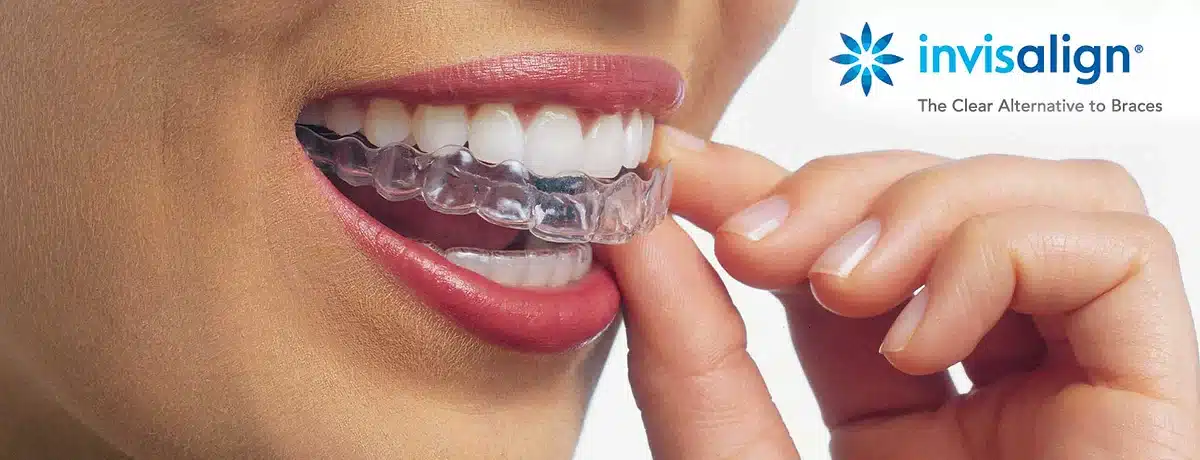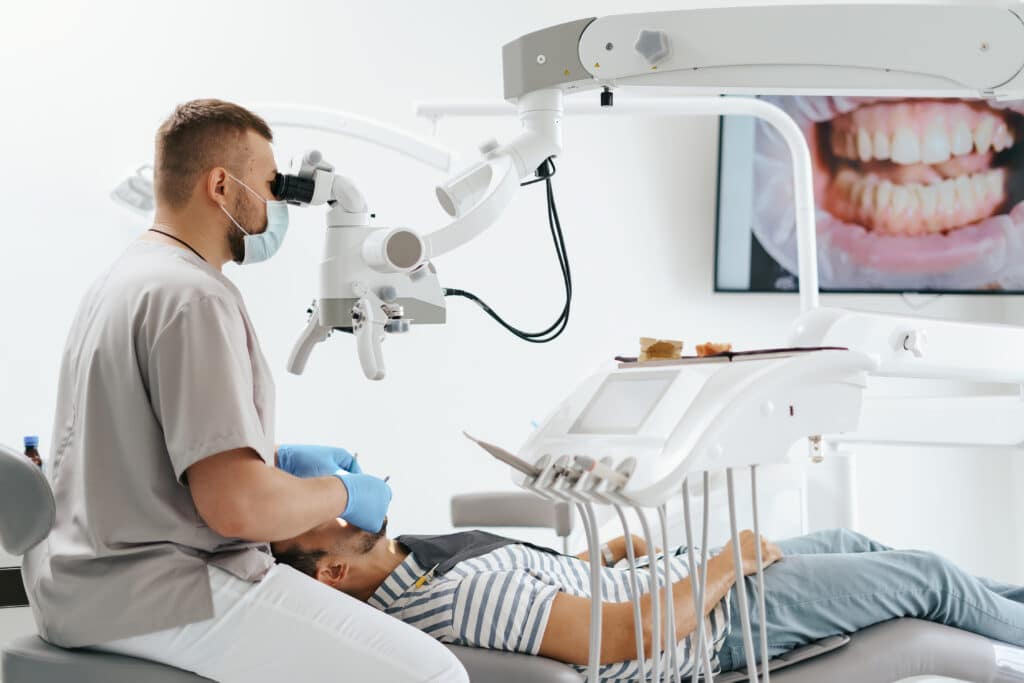Invisalign vs. Traditional Braces: A Detailed Comparison
When it comes to straightening teeth and achieving a beautiful smile, patients today have more options than ever before. Among the most popular choices are Invisalign and traditional braces.
Each method offers unique benefits and downsides that can significantly affect the treatment experience and outcomes.
This detailed comparison aims to explore the differences between Invisalign and traditional braces, helping you make an informed decision about which option is best suited for your dental needs and lifestyle.

Traditional Braces
Traditional braces are metal brackets and wires that are attached to the teeth to correct misalignment. They are typically made of stainless steel and are glued to the teeth using a special dental cement. The brackets are connected by a wire that is tightened over time to gradually move the teeth into the desired position. They have been used for decades and have a proven track record of effectiveness.
Traditional braces also include other components such as rubber bands and springs, which can be used to apply additional force in specific directions. This method of orthodontic treatment is versatile and can be tailored to the unique needs of each patient. Moreover, advances in the field have led to smaller, less conspicuous brackets and more comfortable wires, improving the patient experience.
Pros of Traditional Braces
- Stronger and more effective at correcting severe cases of misalignment
- Can be used to fix a wide range of orthodontic issues
- Cost-effective compared to other orthodontic treatments
- Can be customized with colored bands for a unique look
- The durability of metal braces makes them suitable for patients with an active lifestyle
- They are not reliant on patient compliance, as they are permanently affixed to the teeth
Cons of Traditional Braces
- Can be uncomfortable and irritate the gums and cheeks
- May take longer to achieve desired results
- Difficult to clean and maintain, may require frequent dental visits
- Visible and may impact self-confidence
- Some patients may experience difficulty speaking or chewing immediately after adjustments
- Metal braces can limit the types of food patients can eat, such as avoiding sticky or hard foods
Invisalign
Invisalign is a newer alternative to traditional braces that uses a series of clear, plastic aligners to gradually shift teeth into the desired position. The aligners are custom-made using 3D imaging technology and are changed every 1-2 weeks to continue the gradual movement of the teeth. This approach has gained popularity due to its aesthetic appeal and convenience.
Invisalign treatment begins with a digital scan of the patient’s mouth, which is used to create a precise treatment plan. This technology allows patients and orthodontists to visualize the final outcome before the treatment even starts. The aligners are nearly invisible when worn, making them an attractive option for those who are self-conscious about wearing braces.
Pros of Invisalign
- Virtually invisible, making it a popular choice for adults and teens
- Removable for easy cleaning and maintenance
- Generally more comfortable than traditional braces
- Can be used to correct mild to moderate cases of misalignment
- No dietary restrictions since aligners can be removed before eating
- The smooth plastic aligners are less likely to irritate the gums and cheeks
Cons of Invisalign
- May not be as effective for severe orthodontic issues
- More expensive than traditional braces
- Requires strict adherence to wearing the aligners for optimal results
- May cause slight discomfort or speech changes during the initial adjustment period
- Patients must be disciplined to wear the aligners as prescribed, or treatment may be less effective
- Aligners can be lost or damaged if not cared for properly

Cost Comparison of Invisalign vs. Traditional Braces
The cost of orthodontic treatment is a major factor for many people when deciding between traditional braces and Invisalign. The exact cost will vary depending on the severity of the case and the length of treatment, but here is a general comparison of the average costs of each option.
Traditional Braces
- Average cost: $3,000 – $7,000
- Insurance coverage: Some insurance plans may cover a portion of the cost, usually around $1,000 – $2,000.
- Payment plans and financing options are often available to make treatment more affordable
Invisalign
- Average cost: $3,000 – $8,000
- Insurance coverage: Some insurance plans may cover a portion of the cost, usually around $1,000 – $3,000.
- The cost may include additional expenses such as replacement aligners if they are lost or damaged
Keep in mind that these are average costs and may vary depending on your location and specific treatment needs. It’s always best to consult with your orthodontist for a more accurate estimate. Additionally, inquire about all the costs involved, including those for any necessary post-treatment retainers.
Treatment Process of Invisalign vs. Traditional Braces
Both traditional braces and Invisalign have a similar treatment process, with a few key differences.
Traditional Braces
- First, the orthodontist will clean and dry the teeth before applying the brackets and wires.
- The wires will be tightened periodically to gradually shift the teeth into the desired position.
- The patient must follow a strict oral hygiene routine and avoid certain foods to prevent damage to the braces.
- Regular progress checks are necessary to ensure the treatment is moving forward as planned.
Invisalign
- The patient will receive custom-made aligners that are worn for 20-22 hours per day.
- Every 1-2 weeks, the patient will switch to a new set of aligners to continue the gradual movement of the teeth.
- The aligners can be removed for eating, drinking, and cleaning.
- The patient must maintain regular appointments to monitor progress and receive new aligner sets.
Effectiveness Comparison of Invisalign vs. Traditional Braces
One of the most important factors to consider when choosing between traditional braces and Invisalign is their effectiveness in correcting orthodontic issues.
Traditional Braces
Traditional braces are generally considered to be more effective in correcting severe cases of misalignment. They are also able to fix a wider range of orthodontic issues, such as rotated or tilted teeth. The constant force applied by braces can be more precisely controlled by the orthodontist to achieve the desired tooth movement.
Invisalign
Invisalign is typically recommended for mild to moderate cases of misalignment. While it may not be as effective as traditional braces for severe cases, it can still produce significant results. However, it is not recommended for complex orthodontic issues that require more intricate tooth movements, such as significant rotations or vertical movements.

Maintenance and Care of Invisalign vs. Traditional Braces
Proper maintenance and care are important for both traditional braces and Invisalign to ensure the best results.
Traditional Braces
- Regular brushing and flossing are important to prevent plaque buildup around the brackets and wires.
- Patients must avoid sticky, hard, and sugary foods that can damage the braces.
- Frequent dental appointments are necessary for adjustments and to monitor progress.
- It is also important to use orthodontic wax to protect the inside of your mouth from any sharp edges.
Invisalign
- The aligners should be removed for eating and drinking, then brushed and rinsed before putting them back in.
- Patients should also brush and floss their teeth before wearing the aligners.
- The aligners should be cleaned with a special solution or with a toothbrush and toothpaste.
- Regular dental appointments are still necessary for checkups and to receive new aligners.
- Invisalign patients must be diligent in wearing their aligners for the prescribed number of hours each day.
Which Is Right for You?
When deciding between traditional braces and Invisalign, it’s essential to consider your specific needs and preferences. If you have a severe case of misalignment or a complex orthodontic issue, traditional braces may be the better option. However, if you value a more discreet and comfortable treatment, Invisalign may be the better choice.
It’s also important to consult with an orthodontist who can evaluate your case and recommend the best treatment plan for your needs. They can also provide a more accurate cost estimate and discuss insurance coverage options. Your lifestyle, discipline in following treatment protocols, and aesthetic preferences are all critical factors in your decision.
Conclusion
Both traditional braces and Invisalign have their own unique benefits and drawbacks. Traditional braces may be more effective in correcting severe cases of misalignment and are generally more cost-effective, while Invisalign offers a more discreet and comfortable treatment option.
Ultimately, the best choice for you will depend on your specific needs and preferences. Consult with an orthodontist to determine the best treatment plan for you or your child. With the right treatment, a beautiful and healthy smile is within reach.
Ready to Transform Your Smile?
If you’re considering either traditional braces or Invisalign and need expert advice, contact Legacy Dental today. Our experienced orthodontists are here to evaluate your specific needs and develop a personalized treatment plan that works for you.
Don’t wait any longer to achieve the smile you’ve always wanted. Schedule your consultation with Legacy Dental now and take the first step toward a healthier, more confident smile!
Invest in your smile today with Legacy Dental!



